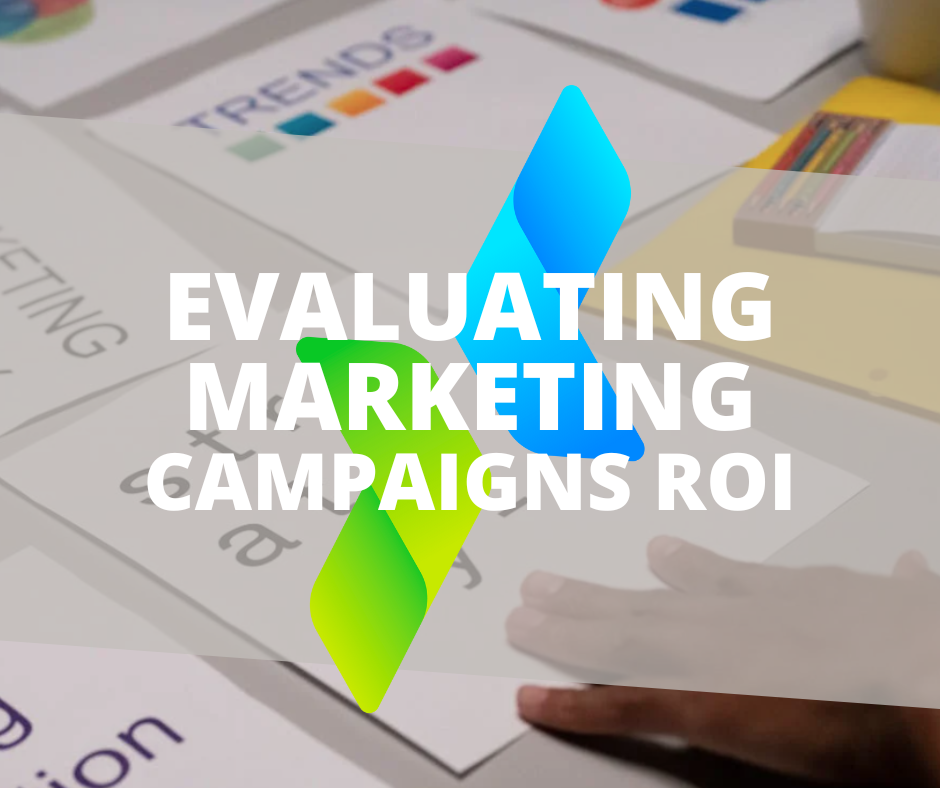In this blog, we’ll explore how Return on Investment (ROI) serves as a critical metric in assessing the success of any marketing campaigns and services we can offer to evaluate them.
4 Strategies for Maximizing Return on Investment (ROI):
- Set Clear Objectives
- Utilize Analytics Tools
- Test and Iterate
- Invest in Long-Term Relationships
In the ever-evolving landscape of business, marketing campaigns play a pivotal role in driving growth, brand awareness, and ultimately, revenue. However, not all marketing efforts are created equal.
With the myriad of strategies available, businesses often find themselves at a crossroads when evaluating the effectiveness of their campaigns. The burning question remains: do these campaigns deliver a return on investment (ROI)?

Understanding ROI in Marketing Campaigns
ROI serves as a critical metric in assessing the success of any marketing initiative. At its core, ROI measures the profitability of an investment relative to its cost. In the realm of marketing, this translates to the revenue generated from the campaign compared to the resources expended.
However, calculating ROI in marketing isn’t always straightforward. Unlike traditional investments where returns are quantifiable and immediate, marketing outcomes can be multifaceted and may not yield immediate results. This complexity often stems from the intangible nature of marketing efforts, such as brand perception, customer engagement, and long-term customer lifetime value.
Key Metrics for Evaluating Marketing Campaigns
To gauge the effectiveness of a marketing campaign, businesses must track a range of metrics beyond direct revenue. Here are some key metrics to consider:
- Customer Acquisition Cost (CAC): This metric calculates the average cost required to acquire a new customer. It encompasses various expenses incurred in marketing efforts, including advertising, sales, and promotional activities.
- Conversion Rate: The conversion rate measures the percentage of users who take a desired action, such as making a purchase, filling out a form, or subscribing to a service. A higher conversion rate indicates that the campaign is resonating with the target audience.
- Customer Lifetime Value (CLV): CLV estimates the total revenue a business can expect from a single customer throughout their relationship. By understanding the long-term value of customers acquired through a campaign, businesses can assess its overall impact on profitability.
- Brand Awareness and Engagement: Tracking metrics related to brand awareness, such as website traffic, social media followers, and mentions, provides insights into the campaign’s reach and impact on audience perception.

Challenges in Evaluating
Despite the importance of ROI in measuring marketing success, several challenges persist in accurately assessing the impact of campaigns:
- Attribution: Determining which marketing efforts directly contribute to a conversion or sale can be complex, especially in today’s multi-channel marketing landscape. Attribution models aim to attribute value to each touchpoint along the customer journey, but achieving accurate attribution remains a challenge.
- Time Lag: Marketing outcomes often unfold over an extended period, making it difficult to attribute revenue directly to a specific campaign. Some campaigns may yield results immediately, while others may require months or even years to demonstrate their full impact.
- Intangible Benefits: Not all benefits of marketing campaigns can be quantified in monetary terms. Building brand equity, fostering customer loyalty, and shaping brand perception are invaluable but challenging to measure in terms of ROI.
Strategies for Maximizing ROI
While evaluating ROI in marketing campaigns may present challenges, businesses can adopt several strategies to maximize their returns:
1. Set Clear Objectives:
Clearly defined goals at the outset of a campaign enable businesses to measure success effectively. Whether it’s increasing sales, expanding market share, or boosting brand awareness, aligning objectives with key performance indicators (KPIs) is essential.
2. Utilize Analytics Tools:
Leveraging analytics tools and platforms can provide valuable insights into campaign performance, audience behavior, and ROI metrics. From Google Analytics to social media analytics dashboards, these tools offer actionable data to optimize marketing strategies.
Did you know that here at Datascan we can offer you the powerful marketing solution of Weezmo that connects customers online and in-store journeys which enables retailers to increase engagement, conversions and revenue.
3. Test and Iterate:
Embracing a culture of experimentation allows businesses to test different marketing approaches, refine strategies based on performance data, and iterate for continuous improvement. A/B testing, multivariate testing, and market segmentation are powerful techniques for optimizing campaigns.
4. Invest in Long-Term Relationships:
While immediate results are important, nurturing long-term relationships with customers can yield substantial ROI over time. Focus on delivering exceptional customer experiences, personalized communication, and value-added services to enhance customer loyalty and lifetime value.

In the dynamic landscape of marketing, evaluating the ROI of campaigns is essential for driving business growth and maximizing profitability. While challenges exist in quantifying the impact of marketing efforts, businesses can leverage a range of metrics, analytics tools, and strategies to assess ROI effectively.
By setting clear objectives, tracking key metrics, and embracing a culture of experimentation, businesses can optimize their marketing initiatives and ensure they deliver tangible returns on investment.


